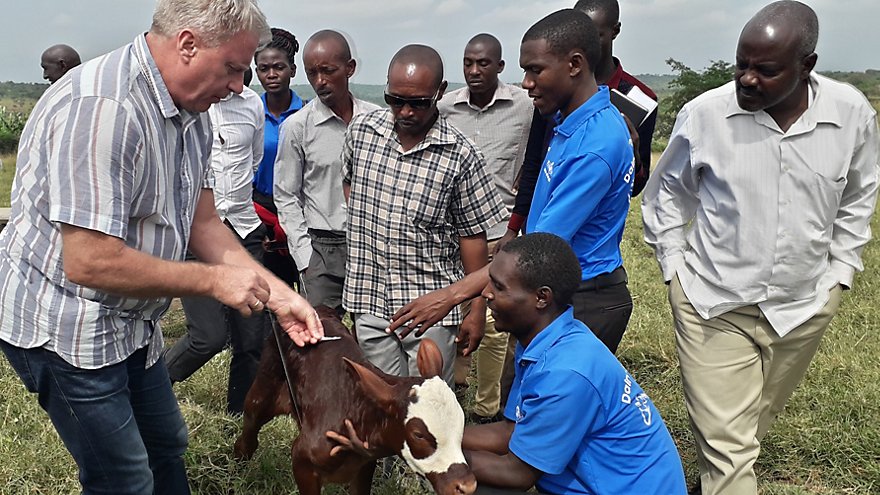2020-07-06
UGANDA
Partnering to develop dairy farming in Uganda

The challenge
Uganda's dairy sector plays a very important role in the economic development of the country, and is a vital source of nutrition. However, although the dairy industry has maintained an average positive growth rate of 3 percent per year, the sector faces various challenges.
According to the Dairy Development Authority, national milk production is 2.2 billion litres per year. Of this, only 33 percent is processed. The remaining 67 percent is not formally collected, and much of it is lost. Some 95 percent of milk production comes from smallholder farmers living in impoverished rural areas. Meanwhile, 41% population is undernourished, according to the FAO.
Productivity per cow in Uganda is low at an average of four litres per day. This is attributed to lack of farmer training and advisory services.
The initiative
The Pearl Dairy Farmers' Community (PDFC) is an initiative led by Pearl Dairy Farms, Ltd. (a leading dairy processor based in Mbarara, Uganda), in collaboration with the International Finance Corporation, Bles Dairies, VetEffect, SNV, Tetra Pak and Tetra Laval Food for Development.
Some 50 dairy development executives have been hired and trained to provide hands-on technical assistance to 1,000 commercial dairy farmers in south-west Uganda. These farmers are also linked to a dedicated processor, giving them guaranteed access to market.
The programme aims to achieve the following objectives:
- Establishment of a professional extension services team that trains the dairy farmers on best practices in farm management, focusing on productivity and milk quality improvement.
- Improve the productivity of the initial 1,000 farms by at least 30%.
- Scale up the programme long-term through an outreach campaign targeting 5,000 smallholder farmers.
The value
Lead farms are showing positive improvements. Overall, milk production has increased by nearly 78% per farm on average. The increase is due to the technical assistance provided by the project team on proper feeding, nutrition, and animal husbandry.
Joseph Nsereko, who lives in Mbarara, is one example of a farmer who has benefited from the initiative. Previously, he struggled to increase his farm's milk production beyond 180 litres per day with a herd of 30 cows. Since joining the project, output has doubled. To date, the project has helped to create 150 new direct jobs and improved the livelihoods of more than 1,000 farmers. Smallholder farmers are learning how to generate more income and enhance the nutritional status of their families.
"We are honoured to have Food for Development's technical support, who offered practical hands-on training to the dairy farmers. Their vast knowledge in dairy farming was a valuable learning experience for the farmers." Amit Sagar, CEO, Pearl Dairy Farms, Ltd.
Looking ahead
Plans are in place to scale up the programme to reach 5,000 smallholder farmers. By 2021, milk output from farms in the region is expected to increase by 100,000 litres/day from the current level of 160,000 litres/days, driving a $3 million annual increase in farmers' revenues.